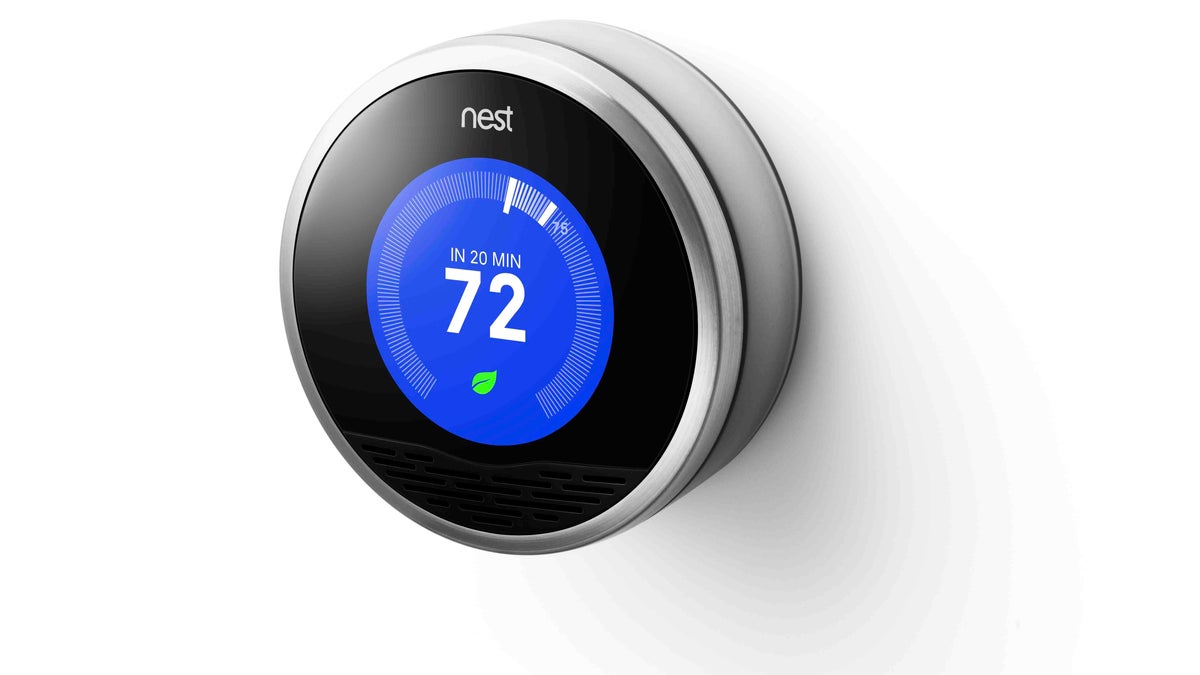iPod creator's next quest: Making thermostats sexy
With startup Nest, the leader of the original iPod and iPhone teams and other Silicon Valley veterans have cooked up the Learning Thermostat, an entirely new approach to efficient home heating and cooling.

It's hard to imagine making thermostats sexy, but if anyone could do it, it would be the "father of the iPod."
In 2008, amid renewed concerns about Steve Jobs' health, Fortune ranked the probable candidates to someday replace the famed Apple CEO. The first choice? Then COO and eventual successor Tim Cook. The second? Tony Fadell, chief of the iPod division and the man credited with the ideas that resulted in the creation of the iPod and its marriage with the iTunes Music Store.
Around that time, Fadell left Apple, his next move unknown, and since then, he's been in stealth mode. But today, he re-emerged, announcing Nest, a 100-person startup that's applying the design and user-experience DNA of Apple and many other top Silicon Valley firms to a humdrum home appliance that just happens to govern the largest share of American households' energy spending: the thermostat.
With its Learning Thermostat, Nest is going all in and telling the world that a ubiquitous but hard-to-master device that hasn't had a major redesign in decades is due for a shot of iPod and iPhone design magic. Fadell and his team think they've come up with an alternative that's easy to use and that learns from what we do. Along the way, the company thinks it could cut 20 percent to 30 percent off the average household's $1,000 or so in annual energy bills.
The new device is small and round and has a bright and simple digital screen and you jog the outer case left or right or push-click the front to make selections. Sound familiar? Plus it works hand in hand with an iOS--and soon an Android--app that lets users control the system from afar.
In recent years companies like Ecobee have popularized smart thermostats that offer diverse programming options, Web-based access, and even weather forecasts. But according to Nest co-founder and vice president of engineering Matt Rogers, even the best such device is essentially a dumb front end to a house's heating or cooling systems: it can't be proactive. Even worse, they're hard to understand and countless dollars are wasted on unnecessary heating or cooling because almost no one knows how to program them.
A 2011 study backs up that contention, as Scientific American reported: Researchers at Lawrence Berkeley National Laboratory "concluded that in many cases, [smart, or programmable] thermostats are making it hard to save energy. The reason is many people don't know how to use them."
And that's precisely what Nest's Learning Thermostat is all about solving, Rogers, also an early iPod and iPhone team member, told CNET. The $249 device, which will go on sale through Best Buy in mid-November, was designed specifically with a clean and simple, intuitive end-to-end user experience in mind.
Even better, Rogers added, the system was built to learn about a household's use of cooling or heating, and to autonomously adjust temperatures based on current and forecasted weather conditions, as well as whether anyone is home, their schedules, and their normal usage patterns. Rogers said the Learning Thermostat picks up on those patterns in about a week.
Upending a static industry
Two years ago, Fadell and Rogers came together with the intention of upending an industry that sells 10 million units a year, but which Rogers said hasn't really innovated in decades.
Part of Nest's plan is to market the Learning Thermostat directly to consumers. Today, Rogers said, this is a market controlled almost entirely by home installers. But that's mainly because current-generation thermostats are complicated to hook up.
By contrast, he explained, Nest's product is meant to be quickly installed by almost anyone and is compatible with 80 percent to 85 percent of American household HVAC systems.
'Thermostat?'
Nest has clearly captured the imagination of Silicon Valley investors and engineers interested in attacking an extremely widespread energy inefficiency problem. It's funded by Google Ventures, Kleiner Perkins Caufield & Byers, Shasta Ventures, Intertrust, Lightspeed Venture Partners, and Generation. As Rogers put it, Nest was built with extensive startup and consumer electronics DNA.
Yet Nest, which is based in Palo Alto, Calif., in the heart of Silicon Valley, has had little trouble hiring talented engineers to build something meant not to play movies or music, but to efficiently heat or cool a home.
"They say, 'thermostat?' and we say that 50 percent of home energy" is spent on heating and cooling, Rogers said. In fact, he added, one of the first things the company asks job candidates is whether they program their home thermostats. Most, he explained, say no. It's too difficult, they say.
For now, Nest is focused entirely on the Learning Thermostat, but there's little doubt that it has designs on attacking other products in the future. "We're talking thermostats today," Rogers said, "but with a team like this, we're obviously thinking about the future. You don't hire a crack team to build a product. You hire them to build a company."
Rogers said that a major part of Nest's secret sauce is the algorithms it's designed for intelligently managing home heating and cooling. But he said the plan is for those algorithms to improve as the system learns about people's usage. "This is year one," he laughed. "I look forward to how much we can save [people] in year two because of all the learning."

